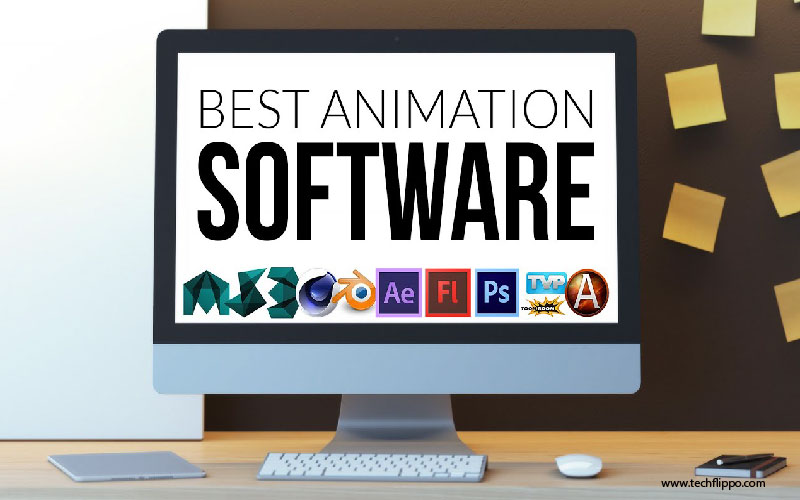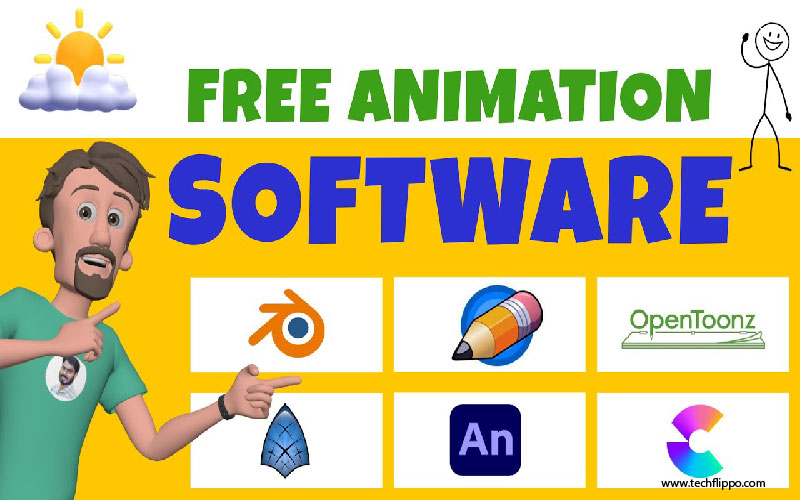Which is best tool for animation?
We will discuss which best tool for animation cartoon creation in detail is. Animation has become an essential part of storytelling in today’s digital world. Whether you’re creating a whimsical short film, engaging social media content, or captivating educational videos, the right animation tool can make all the difference. But with so many options available, how do you know which is best for animation? Each tool serves different purposes and caters to various skill levels. From lively 2D animations that charm audiences to stunning 3D graphics that push creative boundaries, there’s something out there for every animator. Let’s dive into the array of tools available and find out which one might be your perfect match!

Types of animation tools: 2D, 3D, stop-motion
Animation tools come in various forms, catering to different styles and techniques.
2D animation tools focus on creating flat images that move across the screen. They are perfect for traditional animations and web content. Artists can bring their characters to life with simple movements and expressive designs.
3D animation tools take a step further by adding depth and realism. With these programs, creators model objects in three dimensions, allowing for more dynamic storytelling. The results can be visually stunning, making them popular in films and video games.
Stop-motion animation offers a unique approach where physical objects are manipulated frame by frame. This technique captures real-world materials like clay or puppets, giving animations a distinctive charm. It requires patience but rewards artists with delightful outcomes that resonate with audiences.
Each type of tool has its own strengths, appealing to different creative visions and project requirements.
Comparison of popular animation software: Adobe Animate, Toon Boom Harmony, Blender, Stop Motion Studio
Adobe Animate offers a user-friendly interface tailored for both beginners and seasoned animators. Its vector-based animation capabilities make it ideal for creating engaging web content.
Toon Boom Harmony stands out in the industry as a powerhouse for 2D animation. With advanced tools for rigging and compositing, it’s perfect for studios aiming to produce high-quality animations with depth.
Blender is gaining popularity due to its versatile features that cater not only to 3D modeling but also to animation. It’s open-source, making it accessible while providing robust tools like sculpting, texturing, and rendering.
Stop Motion Studio appeals to those who enjoy traditional stop-motion techniques. Its simplicity allows users to easily capture frames and fine-tune their projects without overwhelming complexities. Each software has unique strengths catering to different styles of animation.
Advantages and disadvantages of each tool
Adobe Animate offers a user-friendly interface and seamless integration with other Adobe products. Its rich set of features allows for dynamic animations but can be overwhelming for beginners. The subscription cost may also deter some users.
Toon Boom Harmony is favored in the industry for its robust tools tailored to professional-grade animation. It excels in character rigging and frame-by-frame animation, yet it comes at a premium price point that might not suit every budget.
Blender stands out as a powerful open-source option, perfect for 3D animation enthusiasts. Its extensive capabilities are impressive, but the learning curve can be steep compared to other software.
Stop Motion Studio makes creating stop-motion animations accessible and fun. It simplifies the process but lacks advanced features found in more comprehensive programs, limiting creative possibilities for seasoned animators.
Factors to consider when choosing an animation tool
When selecting an animation tool, start by evaluating your skill level. Beginners might prefer user-friendly software with intuitive interfaces. Advanced users may seek more complex features for detailed work.
Next, consider the type of animation you want to create. 2D animations often require different tools compared to 3D or stop-motion projects. Make sure the software aligns with your specific needs.
Budget also plays a significant role in your choice. Some programs offer free trials or lower-cost options, while others come with hefty price tags. Assess what fits within your financial plan without compromising quality.
Check for community support and resources available online. A vibrant community can provide tutorials and troubleshooting advice that make learning easier and enhance your experience with the tool you choose.

The best tool for beginners
For beginners stepping into the world of animation, user-friendly tools are essential. One standout choice is **Toon Boom Harmony Essentials**. This software offers intuitive features that simplify the learning curve.
Another great option is **Animaker**. It’s web-based and perfect for those who prefer a drag-and-drop interface. You can create animated videos quickly without prior experience.
If you’re interested in 2D animations, **Pencil2D** is an open-source gem worth exploring. Its straightforward layout allows newcomers to focus on creativity rather than getting bogged down by complicated functions.
For stop-motion enthusiasts, **Stop Motion Studio** enables easy frame-by-frame capturing with helpful tutorials built in.
Choosing any of these tools empowers beginners to express their ideas visually while building confidence along the way.
The best tool for professionals
For professionals seeking a robust animation tool, Blender stands out. This open-source software offers an extensive suite of features tailored for advanced users.
Its 3D modeling capabilities are exceptional, allowing artists to create intricate designs with precision. The rendering engine produces stunning visuals that can elevate any project.
Toon Boom Harmony is another industry favorite. It specializes in 2D animation but has powerful tools that facilitate complex animations and smooth character movements.
Both tools provide strong community support and abundant resources for troubleshooting or inspiration.
When choosing the best fit, consider your specific needs. If you’re focused on 3D projects, go with Blender; if traditional animation is your passion, Toon Boom Harmony won’t disappoint.
Having the right tool not only enhances creativity but also streamlines workflow for professional animators aiming to bring their visions to life efficiently.
Tips for making the most out of your chosen animation tool
To maximize the potential of your animation tool, start by exploring tutorials. Most software comes with a wealth of resources. These can help you understand features and shortcuts that enhance efficiency.
Experimentation is key. Don’t hesitate to play around with different styles and techniques within the software. This hands-on approach often leads to surprising discoveries about what works best for your projects.
Join online communities or forums dedicated to your chosen tool. Engaging with fellow users provides insights, feedback, and inspiration. Sharing experiences can lead to quick solutions for common challenges.
Set specific goals for each project. Clear objectives keep you focused and motivated throughout the process, ensuring you’re making the most of every feature available in your tool.
Regularly update your software when new versions are released. Updates often come with improved functionalities that can elevate your animation work significantly.
Conclusion
Animation is a vibrant and creative medium that requires the right tools to bring your ideas to life. The choice of software can significantly influence your animation process, whether you are a beginner or an experienced professional.
Each tool offers unique features tailored for different types of animation. Consider factors like ease of use, cost, functionality, and community support when making your decision. Beginners might start with user-friendly options like Stop Motion Studio or Adobe Animate, while professionals could benefit more from advanced software such as Toon Boom Harmony or Blender.
Regardless of which tool you choose, remember that practice makes perfect. Take time to explore tutorials and online resources related to your chosen software. Embrace experimentation; it’s part of the learning process in animation.
Becoming skilled at using any animation tool will require dedication and creativity. Your ability to tell stories through movement lies within these powerful programs waiting for you to unlock their potential.